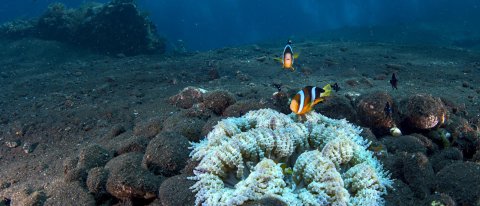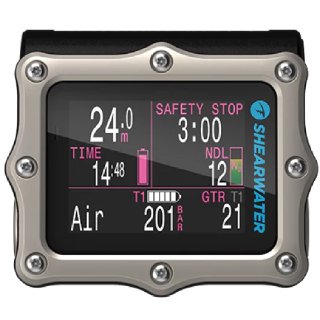The USA has the curious distinction of being effectively the only nation in the world that has declined to move on from the old English imperial system of measures. Many divers in Canada also seem to like using PSI and even feet. This is of course totally fine, and natural for anyone who grew up (or certified) using these measures. However…

The ‘imperial’ system is infamous for units with seemingly random numbers (12? 16? 5280?) and units that don’t really mix between different physical dimensions.
Under this ‘system’, we scratch our heads wondering how a pound per square inch has any direct relation to how many cubic feet of air we need.
Metric units aren’t just some foreign thing that other countries seem to like. It actually does make things much simpler. The unified harmony of how these units simplify matters is typically unexplored. But SCUBA diving is one place where it does matter.
My first SCUBA diving certification was in Seattle, during a dark and chilly December. We donned a 7-millimetre ‘farmer john’ wetsuit with another 7-millimetre hooded top over that. The water was 49ºF, which in ‘imperial’ Fahrenheit units was only 17ºF above ‘freezing,’ or 21ºF above the temperature at which seawater freezes (~28ºF). We strapped on about 30 pounds (lbs) of lead, and tanks with ~3000 psi of compressed air in them, which we were told was ‘80 cubic feet.’
The maths on our written exam were lite, focusing on a basic understanding that our air would run out faster when deep, and our airways could explode on ascent (“Boyle’s Law”). The finer points of mathematical relationships were left to higher level courses, where one might wrestle with constants, partial pressures, calculations and conversions between units that were never conceived to be physically related.
Fortunately tech diving, and any diving really, can be done using the modern metric system, which was formulated to connect everything together. One can very neatly tackle the finer physics of depths, pressures, volumes, weights, and rates in a system with consistent universal units, and a lot of 1’s and 10’s in it. All modern dive computers can be operated under metric units, which I highly suggest. 30 metres is ~100 feet.
The unit of pressure in metric/S.I. units is a pascal (Pa), or 1 newton of force applied over an area of 1 square metre. Ambient surface pressure is conveniently ~100,000 Pa. Doubling the pressure of a gas roughly doubles how many molecules of that gas occupy the same volume. That matters a lot for gas absorption, consumption, narcosis and toxicity.
A newton is the amount of force that gives a 1kg mass an acceleration of 1 metre per second (per second). ‘Weight’ is also a force, rather than just a mass. Things have weight here due to gravity. Buoyancy counteracts gravity, which is why our collective mass as a diver (including our ‘diving weights’) does in fact become ‘weightless’ underwater, though mass remains. 1 litre of water weighs about the same as a 1kg lead block, which means being overweighted by 3 kg means you will have an extra (and unnecessary) ~3 litres of gas in your BCD wing, displacing an equivalent mass of water.
For every 10 metres depth, our ambient pressure increases by ~1 atmosphere. Our cylinders are filled to about 200 bar of pressure, with is ~200 times higher than ambient pressure at sea level. Breathing at about 10 litres of volume per minute, a tank with an internal volume of ~10 litres could last us about 200 minutes at sea level, since it was pumped up to 200 bar. At 10 metres depth, that would reduce to about 100 minutes of air contained in the tank. At 30 metres, 50 minutes, since the ambient pressure would be 4x that of the surface pressure. Just divide 200 bar by the ambient pressure.
Of course, our gas planning was conservative, always keeping ≥50 bar of pressure in the tanks. But the maths are still very simple and clean. This is by design, the Metric System was formulated to do exactly this.
The maths remain similarly simple when moving into partial pressure calculations for nitrox, decompression, mixed gases, gas blending, and ppO2 setpoint calculations for rebreathers.
A similar rundown is not as casually done in imperial units. It could be an estimation game, trivia, or a weedout question in an open-notes Final Exam. It need not be that way!



